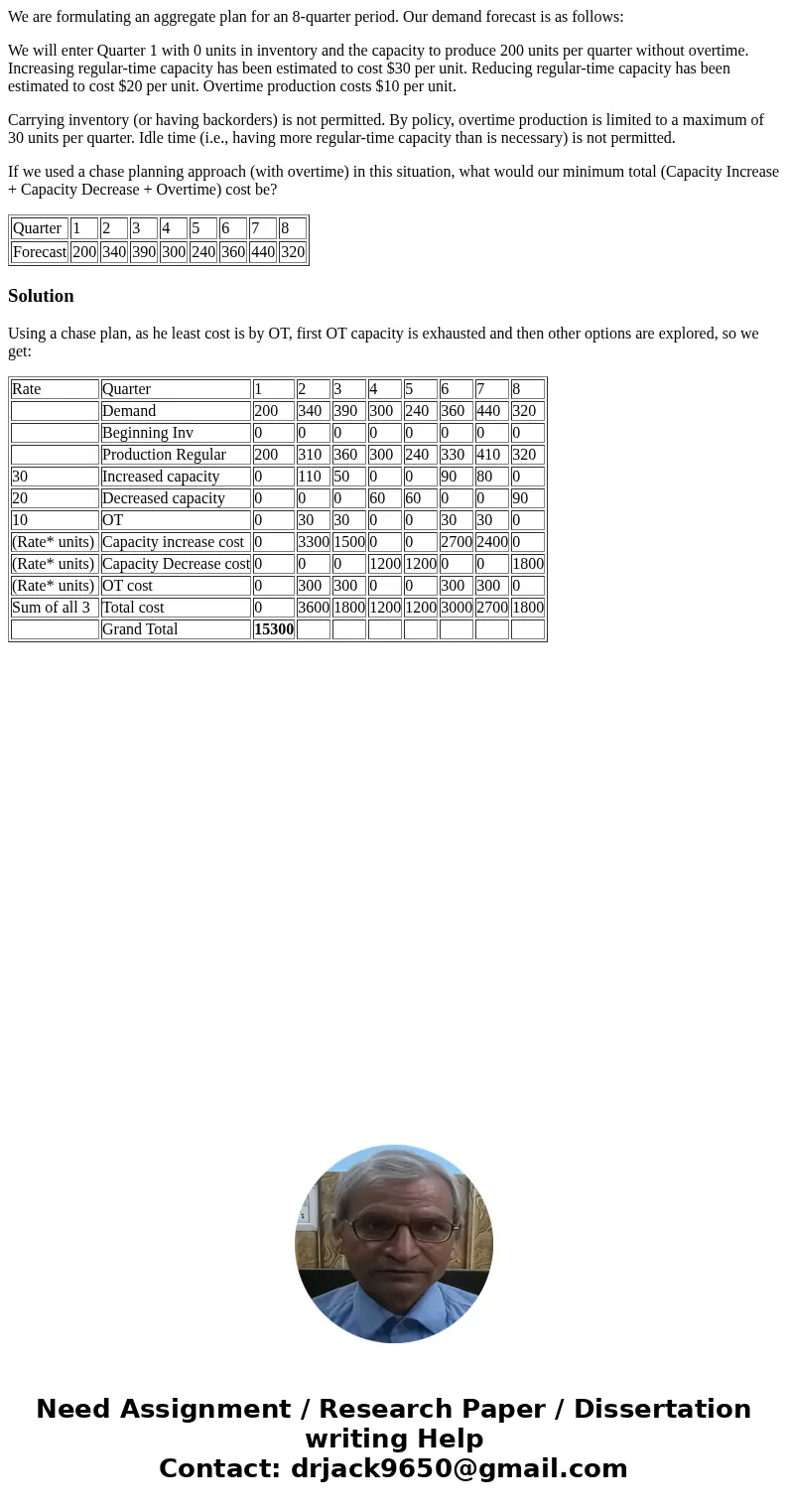We are formulating an aggregate plan for an 8quarter period
We are formulating an aggregate plan for an 8-quarter period. Our demand forecast is as follows:
We will enter Quarter 1 with 0 units in inventory and the capacity to produce 200 units per quarter without overtime. Increasing regular-time capacity has been estimated to cost $30 per unit. Reducing regular-time capacity has been estimated to cost $20 per unit. Overtime production costs $10 per unit.
Carrying inventory (or having backorders) is not permitted. By policy, overtime production is limited to a maximum of 30 units per quarter. Idle time (i.e., having more regular-time capacity than is necessary) is not permitted.
If we used a chase planning approach (with overtime) in this situation, what would our minimum total (Capacity Increase + Capacity Decrease + Overtime) cost be?
| Quarter | 1 | 2 | 3 | 4 | 5 | 6 | 7 | 8 |
| Forecast | 200 | 340 | 390 | 300 | 240 | 360 | 440 | 320 |
Solution
Using a chase plan, as he least cost is by OT, first OT capacity is exhausted and then other options are explored, so we get:
| Rate | Quarter | 1 | 2 | 3 | 4 | 5 | 6 | 7 | 8 |
| Demand | 200 | 340 | 390 | 300 | 240 | 360 | 440 | 320 | |
| Beginning Inv | 0 | 0 | 0 | 0 | 0 | 0 | 0 | 0 | |
| Production Regular | 200 | 310 | 360 | 300 | 240 | 330 | 410 | 320 | |
| 30 | Increased capacity | 0 | 110 | 50 | 0 | 0 | 90 | 80 | 0 |
| 20 | Decreased capacity | 0 | 0 | 0 | 60 | 60 | 0 | 0 | 90 |
| 10 | OT | 0 | 30 | 30 | 0 | 0 | 30 | 30 | 0 |
| (Rate* units) | Capacity increase cost | 0 | 3300 | 1500 | 0 | 0 | 2700 | 2400 | 0 |
| (Rate* units) | Capacity Decrease cost | 0 | 0 | 0 | 1200 | 1200 | 0 | 0 | 1800 |
| (Rate* units) | OT cost | 0 | 300 | 300 | 0 | 0 | 300 | 300 | 0 |
| Sum of all 3 | Total cost | 0 | 3600 | 1800 | 1200 | 1200 | 3000 | 2700 | 1800 |
| Grand Total | 15300 |

 Homework Sourse
Homework Sourse